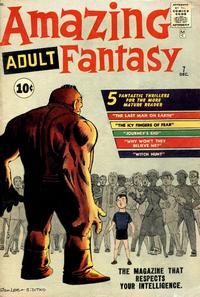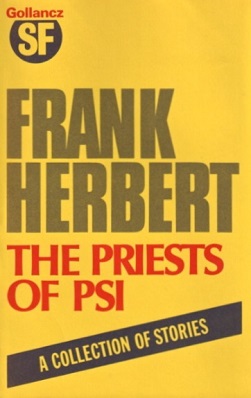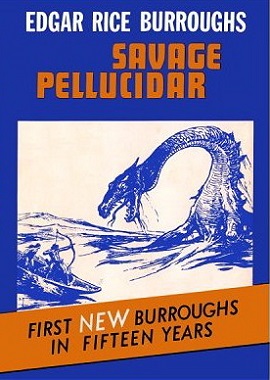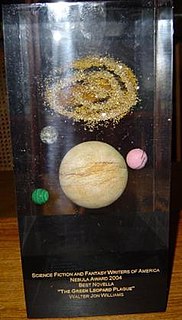
The Amazing Spider-Man is an American comic book series published by Marvel Comics, featuring the fictional superhero Spider-Man as its main protagonist. Being in the mainstream continuity of the franchise, it began publication in 1963 as a monthly periodical and was published continuously, with a brief interruption in 1995, until its relaunch with a new numbering order in 1999. In 2003 the series reverted to the numbering order of the first volume. The title has occasionally been published biweekly, and was published three times a month from 2008 to 2010. A video game based on the comic book series was released in 2000 and a film named after the comic book series was released July 3, 2012.

Spider-Man is a fictional superhero created by writer-editor Stan Lee and writer-artist Steve Ditko. He first appeared in the anthology comic book Amazing Fantasy #15 in the Silver Age of Comic Books. He appears in American comic books published by Marvel Comics, as well as in a number of movies, television shows, and video game adaptations set in the Marvel Universe. In the stories, Spider-Man is the alias of Peter Parker, an orphan raised by his Aunt May and Uncle Ben in New York City after his parents Richard and Mary Parker were killed in a plane crash. Lee and Ditko had the character deal with the struggles of adolescence and financial issues, and accompanied him with many supporting characters, such as J. Jonah Jameson, Flash Thompson, Harry Osborn, romantic interests Gwen Stacy and Mary Jane Watson, and foes such as Doctor Octopus, Green Goblin and Venom. His origin story has him acquiring spider-related abilities after a bite from a radioactive spider; these include clinging to surfaces, shooting spider-webs from wrist-mounted devices, and detecting danger with his "spider-sense".

Stephen John Ditko was an American comics artist and writer best known as the artist and co-creator, with Stan Lee, of the Marvel Comics superheroes Spider-Man and Doctor Strange.

Michael Chabon is an American novelist and short story writer.

Spider-Man, also known as Spider-Man: The Animated Series and Marvel Comics Spider-Man, is an American animated television series based on the Marvel Comics superhero of the same name. The show ran on Fox Kids from November 19, 1994, to January 31, 1998, and ran reruns on the Jetix block on Toon Disney and on Disney XD. The producer/story editor was John Semper Jr. and the production company was Marvel Films Animation.

Amazing Stories is an American science fiction magazine launched in April 1926 by Hugo Gernsback's Experimenter Publishing. It was the first magazine devoted solely to science fiction. Science fiction stories had made regular appearances in other magazines, including some published by Gernsback, but Amazing helped define and launch a new genre of pulp fiction.

Amazing Adult Fantasy and its retitled final issue, Amazing Fantasy, is an American comic book anthology series published by Marvel Comics from 1961 through 1962, with the latter title revived with superhero features in 1995 and in the 2000s. The final 1960s issue, Amazing Fantasy #15, introduced the popular superhero character Spider-Man. Amazing Adult Fantasy premiered with issue #7, taking over the numbering from Amazing Adventures.

Amazing Stories is a fantasy, horror, and science fiction television anthology series created by Steven Spielberg. It originally ran on NBC in the United States from 1985 to 1987.
Studio 4°C Co., Ltd. is a Japanese animation studio founded by Eiko Tanaka and Koji Morimoto in 1986. The name comes from the temperature at which water is most dense.

"What'll We Do With Ragland Park?" is a science fiction short story by American writer Philip K. Dick. It was first published in Amazing Stories magazine in 1963.

Clare Winger Harris was an early science fiction writer whose short stories were published during the 1920s. She is credited as the first woman to publish stories under her own name in science fiction magazines. Her stories often dealt with characters on the "borders of humanity" such as cyborgs.
Minimidget is a fictional character, a superhero who first appeared in Centaur Comics. Minimidget was written and illustrated by John F. Kolb (1913–2004). Because Centaur collapsed in the early 1940s, Minimidget is now in the public domain.

The Short Happy Life of the Brown Oxford is a collection of science fiction stories by American writer Philip K. Dick. It was first published by Citadel Twilight in 1990 and reprints Volume I of The Collected Stories of Philip K. Dick. Many of the stories had originally appeared in the magazines Fantasy and Science Fiction, Planet Stories, If, Galaxy Science Fiction, Imagination, Space Science Fiction, Fantastic Story Magazine, Amazing Stories, Future, Cosmos, Fantasy Fiction, Beyond Fantasy Fiction, Thrilling Wonder Stories and Startling Stories. The collection was reprinted by Citadel Press in 2003 under the title Paycheck and Other Classic Stories.

The Priests of Psi (1980) is a collection of five short stories written by science fiction author Frank Herbert. All of the works had been previously published in magazine or book form.

Savage Pellucidar is a 1963 fantasy story collection by American writer Edgar Rice Burroughs, the seventh and final book in his series about the fictional "hollow earth" land of Pellucidar. It was published twelve years after Burroughs's death.
"The New Accelerator" is a 1901 science fiction short story by H. G. Wells, first published in The Strand Magazine in December 1901. The story addresses an elixir, invented by a Prof. Gibberne, that accelerates all of an individual's physiological and cognitive processes by some orders of magnitude, such that although the individual perceives no change in themselves, the external world appears almost frozen into immobility and only the motion of most rapidly moving objects - such as the tip of a cracked whip - can be perceived.

"The Builder" is a science fiction short story by American writer Philip K. Dick. It was first published in the magazine Amazing Stories, in December, 1953-January 1954, with illustration by Ed Emshwiller. Dick had submitted many short stories to magazines and made approximately fifteen sales before becoming a client of the Scott Meredith Literary Agency. This was his first SMLA submission, received by SMLA on July 23, 1952. His second SMLA submission was Meddler, received by SMLA on July 24, 1952. The SMLA file card for "The Builder" shows it was submitted to mainstream magazines The Atlantic Monthly and Harper's before it was submitted to Amazing Stories and has an SMLA sub-agent's notation, "IT ISN'T SCIENCE FICTION".

Amazing Stories Quarterly was a U.S. science fiction pulp magazine that was published between 1928 and 1934. It was launched by Hugo Gernsback as a companion to his Amazing Stories, the first science fiction magazine, which had begun publishing in April 1926. Amazing Stories had been successful enough for Gernsback to try a single issue of an Amazing Stories Annual in 1927, which had sold well, and he decided to follow it up with a quarterly magazine. The first issue of Amazing Stories Quarterly was dated Winter 1928 and carried a reprint of the 1899 version of H.G. Wells' When the Sleeper Wakes. Gernsback's policy of running a novel in each issue was popular with his readership, though the choice of Wells' novel was less so. Over the next five issues, only one more reprint appeared: Gernsback's own novel Ralph 124C 41+, in the Winter 1929 issue. Gernsback went bankrupt in early 1929, and lost control of both Amazing Stories and Amazing Stories Quarterly; his assistant, T. O'Conor Sloane, took over as editor. The magazine began to run into financial difficulties in 1932, and the schedule became irregular; the last issue was dated Fall 1934.
Since the characters inception in the 1960s Spider-Man has appeared in multiple forms of media, including several novels, short stories, comic strips, graphic novels, light novels and children's books.
The Galaxy Award is China's most prestigious science fiction award, which was started in 1986 by the magazines Zhihui Shu and Kexue Shijie. The award is now organized solely by the magazine Kehuan Shijie, a rebranding Kexue Shijie.

















